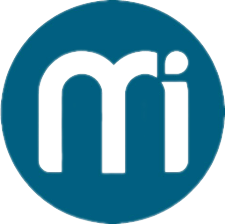Home Rent Receipt – Proper Documentation for Tenants

Introduction
Whether you are renting a property for the first time or have been a tenant for years, one of the most important aspects of the rental process is proper documentation. Among these documents, the home rent receipt plays a critical role. It may appear like a simple slip of paper acknowledging a payment, but its value extends far beyond that. A rent receipt is not just proof that rent was paid—it is a legally recognized document that protects both the landlord and the tenant.
For tenants, it ensures they can demonstrate timely payment and avoid future disputes. For landlords, it provides a structured record that may be required for accounting, taxation, or legal purposes. In an age where financial transactions are closely monitored, rent receipts serve as an essential piece of evidence, especially in the case of misunderstandings or disagreements.
This article will explore the significance of home rent receipts, their components, benefits, digital vs. physical formats, legal importance, and best practices for tenants to ensure proper documentation.
Why a Rent Receipt is Important for Tenants
Proof of Payment
A rent receipt is the most reliable proof that the tenant has fulfilled their rental obligation for a given period. Without it, a landlord could potentially dispute whether a payment was made.
Legal Protection
In many regions, a rent receipt is considered legal evidence. If a landlord accuses a tenant of non-payment, the rent receipt can be produced in court to settle the dispute.
Financial Recordkeeping
Tenants can use rent receipts as part of their financial documentation. They may be required for:
-
Applying for housing allowances
-
Claiming tax exemptions in some countries
-
Demonstrating financial stability for loans
Transparency Between Tenant and Landlord
A properly issued rent receipt fosters trust and transparency. It keeps both parties accountable and avoids confusion over missed or late payments.
Essential Components of a Rent Receipt
A well-documented rent receipt should include the following details to be valid and legally sound:
-
Date of Payment – The exact date when the payment was made.
-
Tenant’s Name – To clearly identify who made the payment.
-
Landlord’s Name and Contact Information – To validate who received the rent.
-
Property Address – To specify which property the rent applies to.
-
Amount Paid – Both in numbers and words to avoid ambiguity.
-
Mode of Payment – Cash, bank transfer, cheque, or online transaction.
-
Rental Period Covered – For example, “Rent for August 2025.”
-
Landlord’s Signature or Stamp – To authenticate the document.
-
Acknowledgment Statement – A brief note confirming receipt of the rent.
A rent receipt missing these elements may cause difficulties if it needs to be presented in a dispute.
Digital Rent Receipts vs. Physical Rent Receipts
With technology transforming every aspect of life, tenants now have the option of digital rent receipts in addition to traditional paper ones.
|
Feature |
Physical Rent Receipt |
Digital Rent Receipt |
|
Format |
Handwritten or printed paper slip |
PDF, email confirmation, or online portal |
|
Storage |
Can be lost, damaged, or misplaced |
Easily stored in cloud or email |
|
Verification |
Requires signature/stamp for validity |
Automatically timestamped and secure |
|
Convenience |
Must be collected physically |
Can be sent instantly |
|
Legal Acceptance |
Universally accepted |
Accepted in most regions, depending on law |
|
Cost |
Printing/stationery costs |
Minimal to no cost |
Analysis of the Table
While both formats are valid, digital rent receipts are gaining popularity due to their convenience and security. For tenants, storing a digital receipt in email or cloud storage ensures it cannot be lost. Physical receipts, while legally recognized everywhere, require careful filing and storage to avoid misplacement. Ultimately, the choice depends on local regulations and the tenant’s or landlord’s comfort with digital documentation.
Practical Tips for Tenants Regarding Rent Receipts
-
Always Request a Receipt – Even if your landlord is a friend or relative, never skip documentation.
-
Check Accuracy Before Accepting – Ensure the date, amount, and rental period are correctly mentioned.
-
Prefer Digital Transfers – When possible, pay via bank transfer or online payment platforms for automatic proof.
-
Keep a Personal Record – Maintain a file (digital or physical) with all your rent receipts.
-
Verify Legal Validity in Your Area – Some jurisdictions may require stamped receipts for legal acceptance.
-
Use Rent Receipts for Tax Benefits – In certain countries, especially for salaried employees, rent receipts are crucial for claiming House Rent Allowance (HRA) exemptions.
Common Mistakes Tenants Should Avoid
-
Accepting unsigned receipts – Without a landlord’s signature, the document may not hold up legally.
-
Paying in cash without documentation – Cash payments should always be backed with a receipt.
-
Not specifying rental period – A receipt that doesn’t clarify which month or period it covers could lead to disputes.
-
Overlooking duplicate entries – Ensure your landlord doesn’t issue multiple receipts for the same period to avoid future confusion.
Legal Significance of Rent Receipts
Rent receipts are not just for personal recordkeeping—they can hold substantial legal weight.
-
Dispute Resolution – Courts accept rent receipts as evidence in tenant-landlord disputes.
-
Eviction Protection – If a landlord tries to evict a tenant claiming non-payment, rent receipts can protect the tenant.
-
Tax Purposes – In certain countries, rent receipts are essential for tax deductions or allowances.
-
Rental History Proof – Rent receipts act as a rental track record, useful when applying for new accommodations or rental agreements.
Without proper documentation, tenants risk losing legal battles or missing out on financial benefits.
Best Practices for Landlords and Tenants
While this article focuses on tenants, both landlords and tenants share responsibility in ensuring smooth rent documentation.
-
Landlords should issue receipts promptly and maintain duplicates for their own accounting.
-
Tenants should request receipts immediately upon payment and never delay in storing them properly.
-
Both parties should embrace digital tools like mobile apps or rental management software for more secure and transparent recordkeeping.
Frequently Asked Questions (FAQs)
1. Is a rent receipt mandatory?
While not always legally required, a rent receipt is strongly recommended. It serves as proof of payment and protects both the landlord and tenant from disputes.
2. Can a tenant demand a rent receipt if the landlord refuses?
Yes. In many jurisdictions, tenants have the right to request a rent receipt, and landlords are legally obligated to provide it upon payment.
3. Are digital rent receipts legally valid?
Yes, in most places. Digital receipts (PDFs, emails, or payment confirmations) are increasingly accepted as long as they contain all essential details. However, tenants should verify local regulations.
4. What happens if a tenant loses a rent receipt?
If a rent receipt is lost, tenants should request a duplicate copy from the landlord or provide alternative proof such as bank transaction records.
5. Can rent receipts help in claiming tax exemptions?
Yes. In many countries, salaried employees can claim House Rent Allowance (HRA) exemptions by submitting rent receipts to their employers.
6. Do cash payments without receipts count as valid rent payments?
Legally, cash payments without documentation are hard to prove. Always insist on a receipt, even for cash transactions, to avoid complications later.
7. Should landlords keep copies of rent receipts?
Absolutely. Landlords should retain copies for accounting, tax filing, and as a safeguard in case of disputes.
Conclusion
A home rent receipt may seem like a small formality, but it carries immense significance for tenants and landlords alike. It is the cornerstone of transparency in rental agreements, providing proof of payment, legal protection, and financial documentation. With the increasing shift toward digital transactions, tenants now have more convenient ways to maintain secure records.
By understanding its importance, knowing what details to check, and following best practices, tenants can safeguard their rights, maintain strong financial records, and ensure a smoother rental experience. Whether opting for physical slips or digital confirmations, never overlook the importance of proper documentation.
If you’re currently renting or planning to rent a property, make rent receipts a non-negotiable part of your rental journey. Proper documentation today can save you from unnecessary disputes and financial hassles tomorrow.
- Art
- Causes
- Crafts
- Dance
- Drinks
- Film
- Fitness
- Food
- Games
- Gardening
- Health
- Home
- Literature
- Music
- Networking
- Other
- Party
- Religion
- Shopping
- Sports
- Theater
- Wellness


